Marble and limestone are two of the most admired stones you’ll find in residential homes and commercial spaces. They’re chosen for their subtle patterns, their natural warmth, and the sense of quality they bring to a project. The very qualities that make these stones so attractive are also what make them tricky to work with – especially when it comes to stain removal.
Because they’re made up of calcite, marble, and limestone are porous and react badly to acids, which leaves them vulnerable to damage. A splash of lemon juice, vinegar, or a “universal” cleaner from the hardware store can leave behind a dull etch mark.
That fragility changes things for contractors. With granite, you can usually hit a stain with a strong cleaner or poultice and move on. Do that on marble and you might be looking at a permanent mark. Marble and limestone don’t respond well to heavy-handed fixes; it’s all about picking the right product and taking a careful approach.
The Two Sides of the Problem
Most stains on marble and limestone fall into one of two categories:
Organic stains: food, drink, and natural matter. Think coffee, red wine, oils, sauces, or mold. Once stains get into the pores, they don’t just sit there; they can alter the color of the stone and leave behind a dull mark that lingers unless you know how to tackle it properly.
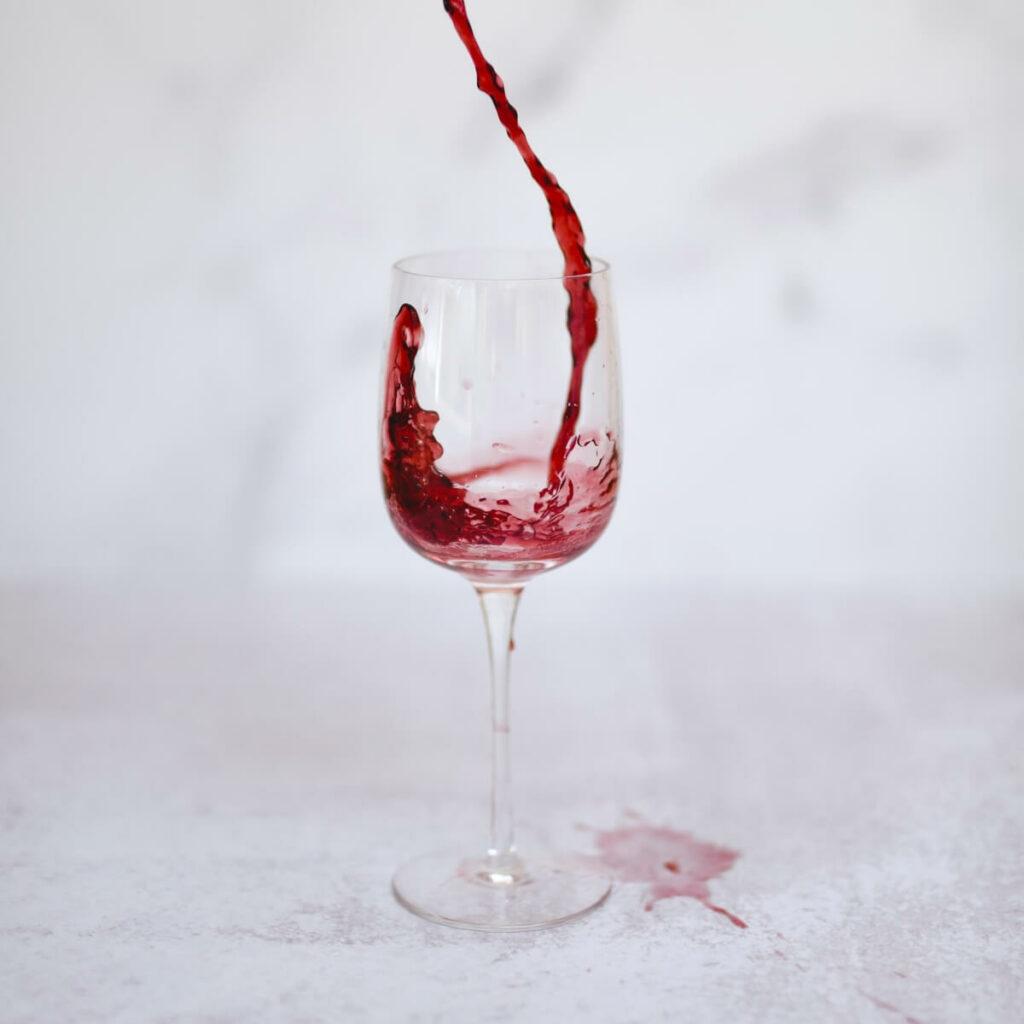
Likewise, contractors also run into non-organic problems: rust marks under furniture, a haze of grout that won’t wipe away, or minerals left behind by water. Marks like these don’t come from food or drink; they’re chemical issues. They call for stronger cleaners, but ones that won’t chew up the surface in the process.
The reality is, stains don’t usually show up one at a time. It’s rare to get just one problem. More often, it’s oil patches, planter rings, and leftover grout haze all showing up together. It’s one thing to lift a mark, but another to do it without leaving the surface worse off.
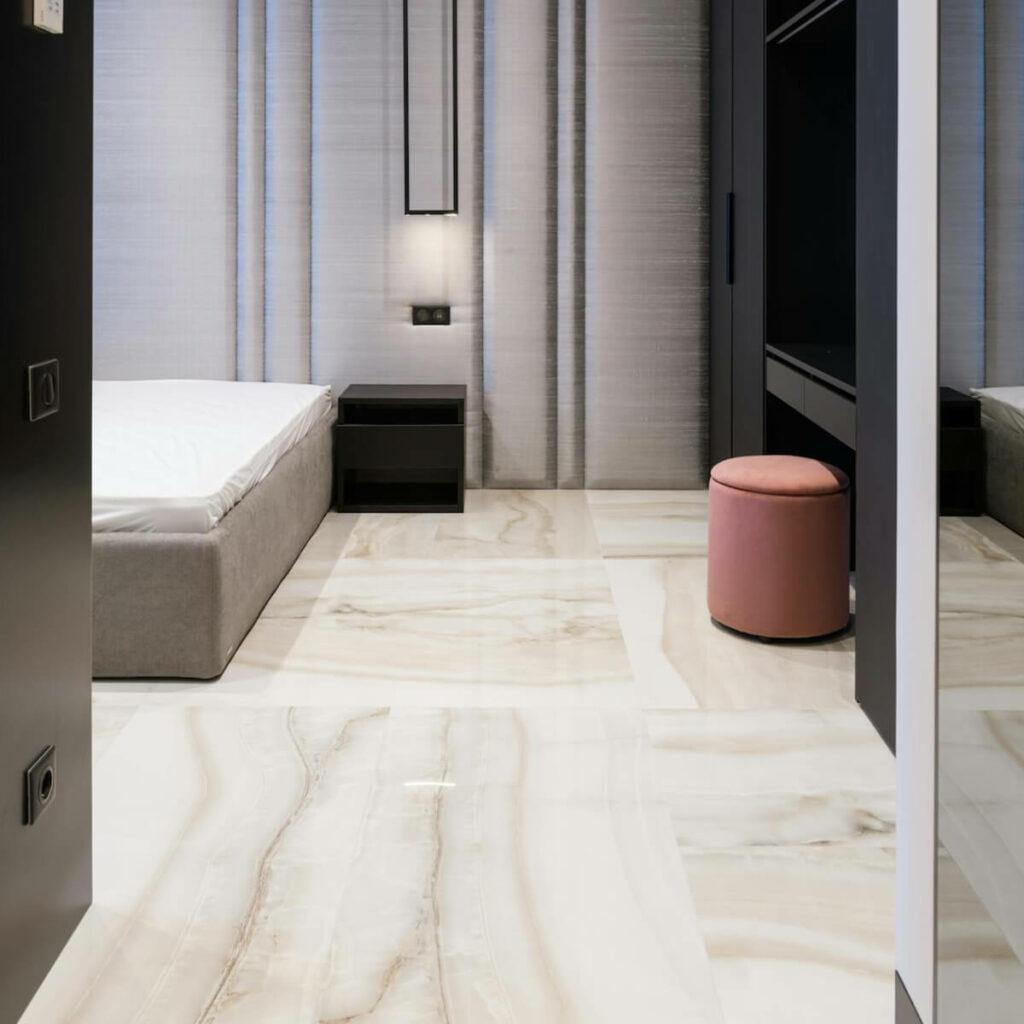
What You’ll Most Often Be Cleaning Up
From household kitchens to commercial spaces, organic stains are hard to avoid. Coffee splashes, sauces, and oils can all leave their mark, and the following products are built to deal with them:
- SR95 is the tool of choice for precision work, a single tea ring on a polished marble countertop, or a coffee mark on limestone. It’s formulated to target colored organic stains without dulling or etching the surface.
- PS87 can also handle organic stains like coffee or fruit juice, but it’s better suited for larger or dirtier areas. Think of a limestone floor after a big event or a kitchen surface that’s built up with weeks of grease. In those situations, this cleaner’s concentrated formula lets you clean across a wide area, lifting the buildup and getting the stone ready for sealing. Use it only on unpolished natural stone; polished marble or limestone are too vulnerable for this cleaner.
- NOSPOT is often described as a poultice in a spray can. You apply it straight onto greasy marks and, as it dries, it turns into a fine powder that draws the oil out of the stone. It’s especially handy in places where oils are a constant headache, such as kitchen counters, driveways, and even patios that pick up barbecue drips or food spills.
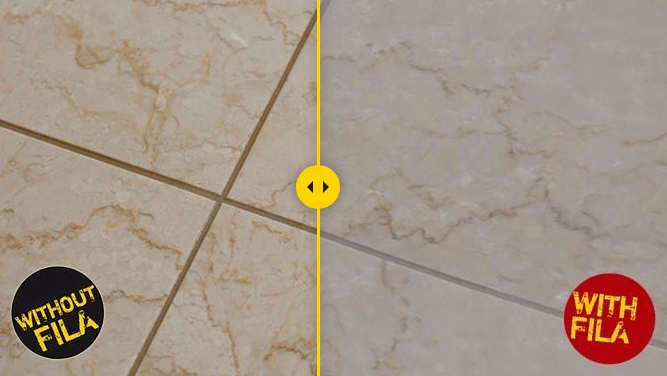
The Other Side of the Problem: Construction and Rust
Not every mark on marble or limestone comes from natural matter. Some problems appear during or just after installation: a haze of grout that won’t wash away, leftover construction dust, or rust rings under planters and furniture. These stains can be just as stubborn as organic ones, but they need a more specialized approach to avoid damaging the stone. Here are two products contractors rely on in situations with inorganic stains:
- STONECLEAN is the safe choice for cementitious residues on acid-sensitive stones. On porcelain, contractors often use an acid-based cleaner to tackle grout haze. On marble or limestone, acids would etch immediately. Diluted 1:30, this neutral cleaner provides a safe way to remove light grout residues and construction dirt during the first clean. Diluted further, it doubles as a no-rinse daily cleaner or as a stronger wash for stubborn dirt. Its versatility makes it essential on marble and limestone jobs, where the wrong product can cause irreversible damage.
- NORUST tackles the brown or orange rings left by metal furniture, planters, or tools. The formula is non-acidic, so it can safely be applied to polished marble and limestone without the risk of etching. The gel consistency also helps it cling to vertical surfaces for effective treatment.
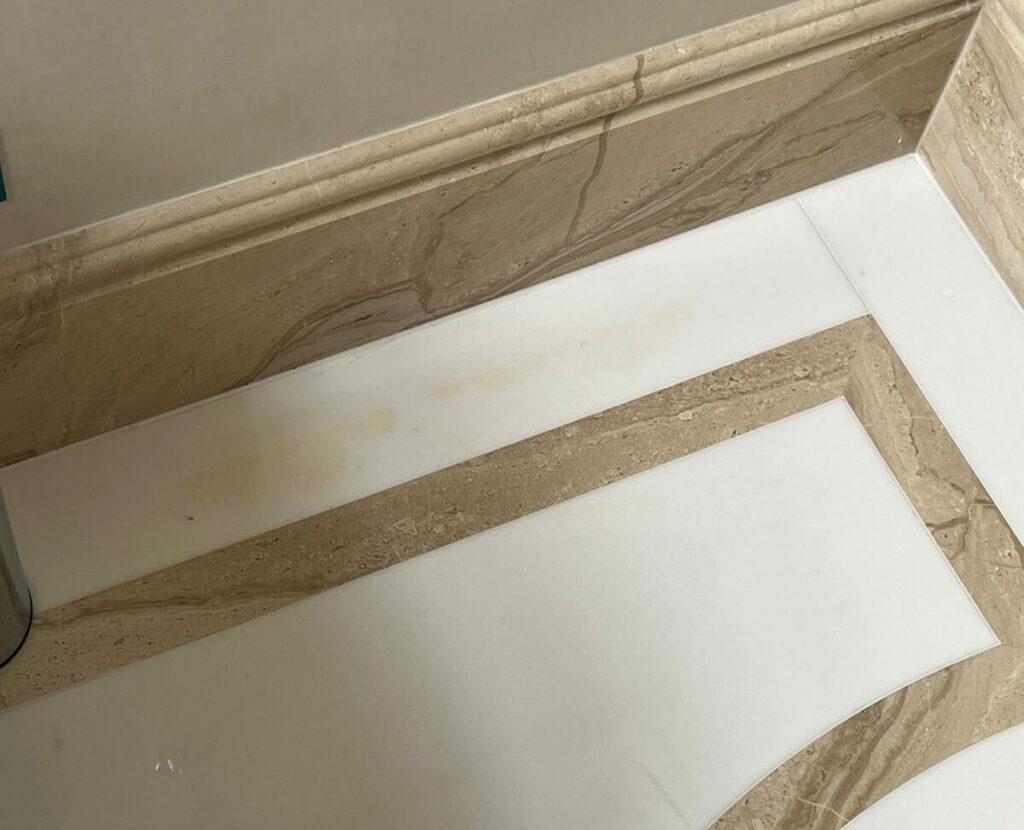
Tips That Keep Jobs Running Smoothly
Beyond choosing the right product, a few habits can make or break the outcome:
- Watch how long the product sits – even gentle cleaners can leave marks if they’re left on too long.
- Stick with gentle pads – white pads or microfiber cloths do the job without scratching, unlike the harsher sponges that can leave marks behind.
- Don’t skip the rinse – leftover product tends to hang onto dirt and takes the shine out of the stone.
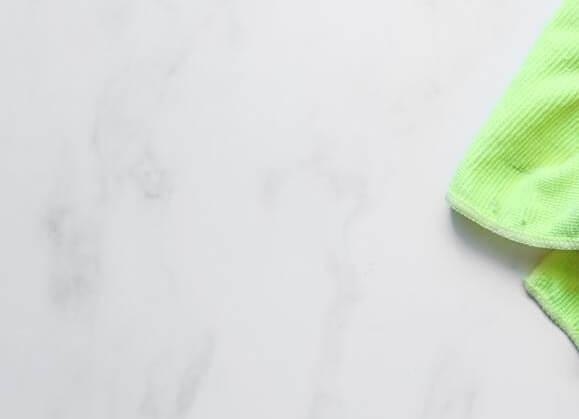
Keeping Stains From Taking Hold
The easiest stain to fix is the one that never has a chance to settle. Once a mark is cleaned, adding a good sealer helps the stone resist spills and makes future maintenance much simpler. A few small steps go a long way too. That might mean slipping a mat under a planter, setting coasters on a marble table, or reminding clients to only clean with a neutral cleaner. It’s the little things that add up; they’re what separate a surface that stays sound from one that constantly needs work.
At its core, FILA’s care cycle is straightforward: keep the stone clean, add the right sealer, and use gentle products for day-to-day upkeep. Stick with the system and the difference shows. The stone keeps its look, call-backs drop off, and your work still stands out long after you’ve left the site.
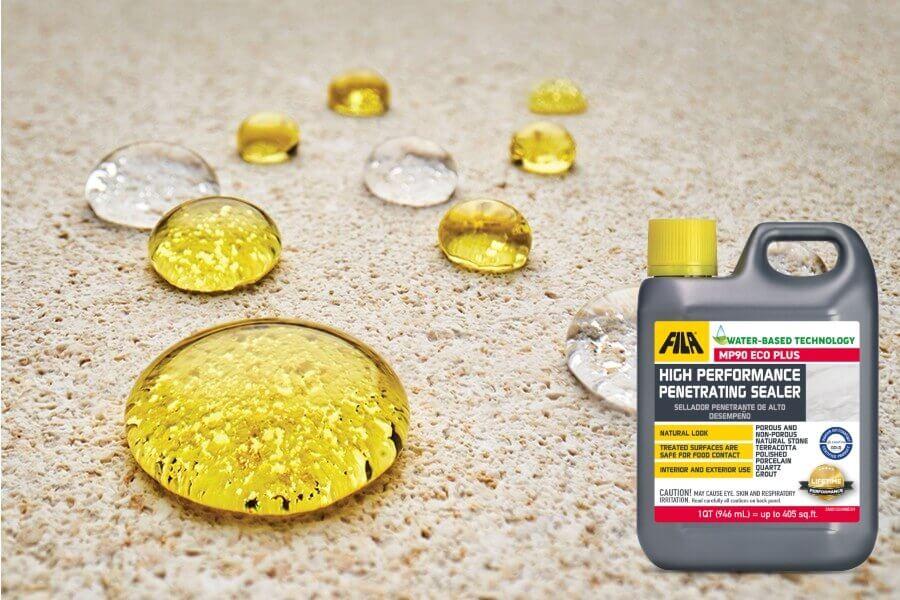
How to Keep Marble and Limestone Looking Their Best
Working with marble and limestone means balancing beauty with care. Stains and residues are inevitable, but the difference is in how they’re handled. With the right products, contractors have a safe, reliable system for acid-sensitive stones.
Handled properly, these surfaces can last for decades, resulting in fewer call-backs for you, happier clients, and projects that keep their quality long after handover. And if you face a tricky job, the FILA team is here to help with product advice and application methods to keep your work protected.
